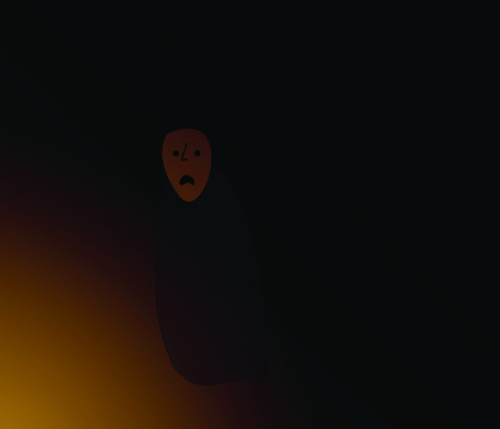By BROOKLYN BROWN
Tsisqwohi (Birdtown)
The Eastern Band of Cherokee Indians (EBCI) Dinilawigi (Tribal Council) utilizes banishment to maintain law and order on the Qualla Boundary. Individuals convicted of crimes ranging from drug trafficking to assault can and have been banished from the Qualla Boundary. Banishment requires the Cherokee Indian Police Department, the Office of the Tribal Prosecutor, Cherokee Tribal Court, Dinilawigi (Tribal Council), and/or the Executive Office to submit a resolution. The resolution is then approved or denied by Dinilawigi (Tribal Council). To date, there are zero enrolled members of the EBCI on the banishment list. All of the individuals on the banishment list are not enrolled with the EBCI.

Cherokee booger masks are used to ward off evil spirits and evil people, especially those who intend to harm our women and children. (Art by Brooklyn Brown)
In a journal article titled, “Native Law: Law and Order Among Eighteenth-Century Cherokee, Great Plains, Central Prairie, and Woodland Indians,” written by attorney Ken Traisman in volume 9 of the American Indian Law Review published by the University of Oklahoma, Traisman describes the ancient law and order practices of the Cherokee.
The article details Cherokee blood law, or blood vengeance, which is a system of justice for the crime of homicide among ancient Cherokees. “One of the primary functions of the clan system was to avenge or satisfy homicides…If a member of one clan killed a member of another clan, the victim’s clan was owed one life from the clan of the killer,” (Traisman, 275).
The article also describes the practices of ostracism, or banishment, and satirical sanctions (public shaming, mocking, or ridiculing) as justice systems for lesser crimes, “For less grievous antisocial behavior, the Cherokees used a system of ostracism, sarcasm, and ridicule to punish and deter criminals, and to keep peace in the tribe,” (Traisman, 275).
Traisman says specifically of ostracism: “Ostracism was used as a penalty for more disruptive acts than those meriting merely satirical sanctions. Disruptive political or social behavior and aggressiveness were punishable by ostracism. One punished by ostracism would have his clan protection withdrawn and would be given “the silent treatment” by his townspeople,” (Traisman, 277).
It is well documented that banishment, a form of law and order we still employ today, was a traditional practice. The practice functioned primarily for the protection and peace of the community, and to punish and rehabilitate community members disturbing the “to-hi” (peace, harmony, balance) of the Cherokee.
With this traditional knowledge at our disposal, and the function of banishment available today, why do we not employ banishment for enrolled members who are convicted and/or repeat offenders of serious crimes such as child sex abuse, rape, murder?
I appreciate that Dinilawigi and the associated tribal entities utilize banishment for non-enrolled offenders. It is a needed exercise of tribal sovereignty to protect the Qualla Boundary. However, how much of the boundary is being protected if violent offenders, who are insidiously and parasitically embedded in the community, are still able to destroy homes and poison lives on the Boundary?
Protection of our community starts from within.





